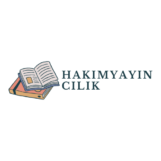I’ve helped countless professionals create clear technical documentation over the years, and I know firsthand how challenging it can be to write effective instructions. Whether you’re documenting software procedures or explaining complex machinery, having solid examples to reference makes all the difference.
Technical writing requires a delicate balance of clarity, precision and user-friendly language. I’ll walk you through real-world examples of technical instructions that effectively guide users through processes step-by-step. From user manuals and standard operating procedures to API documentation and troubleshooting guides, these proven samples will help you craft better technical content for your audience.
Key Takeaways
- Technical writing instructions examples requires accuracy, structured organization, and clear formatting to effectively communicate complex information to specific audiences
- Successful technical documentation includes essential elements like step-by-step procedures, visual aids (screenshots, diagrams), consistent terminology, and precise language without jargon
- Different types of technical documents serve unique purposes – from user manuals and API docs for external audiences to SOPs and white papers for internal teams and decision-makers
- Best practices include using active voice, maintaining 1:1 action-to-step ratio, including relevant visuals, and organizing content logically with proper document structure
- Testing and validation through usability tests, diverse participant feedback, and metric tracking are crucial for ensuring technical documentation effectiveness
Technical Writing Instructions Examples
Technical writing transforms complex information into clear documentation for specific audiences. I create technical content that enables users to understand processes, products or services through structured documentation.
Key Elements of Technical Writing
- Accuracy in presenting factual information without ambiguity
- Structured organization with logical flow between topics
- Clear formatting using headings, lists, tables for easy scanning
- Precise language avoiding jargon or colloquialisms
- Task-focused content addressing user needs
- Visual elements like diagrams, screenshots, illustrations
- Consistent terminology throughout documentation
- Step-by-step procedures with numbered sequences
- User Manuals: Setup guides, operating instructions, troubleshooting steps
- Standard Operating Procedures: Detailed workflow documentation, safety protocols
- API Documentation: Integration guides, endpoint references, code examples
- Product Specifications: Technical details, compatibility requirements, performance data
- Installation Guides: Hardware assembly, software deployment procedures
- Release Notes: Version updates, bug fixes, new feature descriptions
- White Papers: Technical research, solution analyses, methodology documentation
- Knowledge Base Articles: FAQs, how-to guides, support documentation
| Document Type | Primary Purpose | Target Audience |
|---|---|---|
| User Manuals | Product Operation | End Users |
| API Docs | Integration Reference | Developers |
| SOPs | Process Standardization | Internal Teams |
| White Papers | Technical Analysis | Decision Makers |
Best Practices for Writing Technical Instructions
Technical writing instructions require specific practices to enhance comprehension and usability. I focus on proven strategies that transform complex information into accessible documentation.
Using Clear and Concise Language
Active voice creates direct technical instructions that eliminate confusion. I maintain a 1:1 ratio between actions and steps, using specific verbs like “”click”” “”select”” or “”enter”” instead of vague terms like “”utilize”” or “”implement.”” Here’s how I structure clear instructions:
- Start each step with an action verb (Press, Click, Navigate)
- Include one action per instruction step
- Replace jargon with plain terms (“”start”” vs “”initialize””)
- Use consistent terminology throughout the document
- List exact measurements metrics units when applicable
- Specify conditions directly (“”when temperature reaches 100°F”” vs “”when hot””)
- Screenshots with highlighted action areas
- Numbered callouts matching written steps
- Flowcharts for complex procedures
- Warning icons for critical safety information
- Diagrams showing component relationships
- Tables for comparative data specifications
| Visual Element Type | Comprehension Improvement |
|---|---|
| Screenshots | 65% |
| Diagrams | 54% |
| Flowcharts | 48% |
| Icons | 42% |
| Tables | 38% |
Step-by-Step Technical Writing Format
Technical writing format follows a structured approach that transforms complex information into digestible, actionable steps. Here’s a detailed breakdown of the essential components and workflows.
Setting Up Document Structure
The document structure creates a foundation for clear technical instructions with 5 core elements:
- Title Block
- Document name
- Version number
- Last updated date
- Author information
- Document status (Draft/Final)
- Table of Contents
- Main sections
- Subsections
- Page numbers
- Quick navigation links
- Prerequisites Section
- Required tools
- System requirements
- Safety precautions
- Access permissions
- Body Content
- Numbered steps
- Indented substeps
- Code blocks
- Warning/Note boxes
- Supporting Materials
- Glossary terms
- Reference links
- Related documents
- Troubleshooting guides
- Information Gathering
- Collect technical specs
- Interview subject experts
- Review existing documentation
- Test procedures personally
- Content Organization
- Create detailed outlines
- Group related steps
- Establish dependencies
- Map user journeys
- Documentation Development
- Write step-by-step instructions
- Add screenshots at key points
- Include command examples
- Mark decision points
- Review Process
- Technical accuracy check
- User testing feedback
- Editorial review
- Compliance verification
- Version Control
- Track document changes
- Update revision history
- Archive older versions
- Maintain change logs
Real-World Technical Writing Examples
Technical writing examples demonstrate effective communication across various industries through practical documentation formats. Here’s an analysis of three distinct categories with specific examples.
Software Documentation Examples
Software documentation combines clear instructions with visual elements for optimal user comprehension. Here are key examples:
- API Integration Guide:
# Authentication Example
auth_token = authenticate(api_key, secret_key)
response = api.get_data(endpoint, auth_token)
- Mobile App User Guide:
- Launch the application
- Tap Settings > Account > Profile
- Enter your credentials in the designated fields
- Select Update to save changes
- Software Release Notes:
Version 2.1.0
- Added dark mode functionality
- Fixed login authentication bug
- Improved loading speed by 40%
Hardware Installation Guides
Hardware documentation requires precise sequential steps with safety considerations. Examples include:
- Printer Setup Guide:
- Remove protective packaging
- Connect power cable to rear port
- Install ink cartridges following color codes
- Load paper into the main tray
- Network Router Configuration:
Initial Setup Steps:
1. Connect ethernet cable to WAN port
2. Power on device
3. Access 192.168.1.1 via browser
4. Enter default credentials: admin/admin
- Laboratory Safety Manual:
Chemical Handling Protocol:
- Wear nitrile gloves
- Use fume hood ventilation
- Store at 20°C
- Emergency contact: 555-0123
- Equipment Operation Safety:
- Inspect power connections
- Verify emergency stop functionality
- Check safety guards placement
- Test backup systems
- Emergency Response Procedures:
Fire Safety Protocol:
1. Activate alarm
2. Exit through marked routes
3. Gather at assembly point A
4. Report to safety coordinator
Tips for Testing and Validating Technical Instructions
Testing technical instructions ensures their effectiveness through practical validation methods. Here’s a structured approach to evaluating documentation quality.
Conducting Usability Tests
Usability tests measure how effectively users complete tasks by following technical instructions. I organize testing sessions with 5-8 participants from the target audience demographic to observe their interaction with the documentation. Here are key components of effective usability testing:
- Select diverse test participants matching the intended user profiles
- Create specific task scenarios based on common use cases
- Record completion rates time metrics for each instruction set
- Monitor points of confusion or hesitation during task execution
- Document navigation patterns through the instructions
- Track error rates when following procedural steps
- Measure time-to-completion for each documented process
- Create standardized feedback forms with both quantitative ratings (1-5 scale) for:
- Clarity of instructions
- Completeness of information
- Navigation ease
- Visual aid effectiveness
- Establish automated feedback collection through:
- In-document surveys
- Email response forms
- Online feedback widgets
- Comment sections
- Track specific metrics:
- Number of support tickets related to documentation
- Frequency of repeated questions
- Time spent on each documentation section
- Documentation search patterns
| Feedback Method | Response Rate | Implementation Time |
|---|---|---|
| In-doc Surveys | 15-20% | 2-3 hours |
| Email Forms | 25-30% | 1-2 hours |
| Online Widgets | 10-15% | 4-5 hours |
| Comment Sections | 5-10% | 2-3 hours |
Writing Instruction
Creating effective technical writing instructions examples requires a blend of clear writing precise instructions and strategic organization. I’ve shared numerous examples and best practices that demonstrate how to transform complex information into user-friendly content.
The key to success lies in understanding your audience maintaining consistency and incorporating visual elements that enhance comprehension. Remember that technical writing is an iterative process that benefits from regular testing and refinement.
By following these guidelines and examples you’ll be well-equipped to create technical documentation that serves its purpose effectively. Whether you’re writing software guides hardware manuals or safety procedures these principles will help you deliver clear actionable instructions to your readers.

